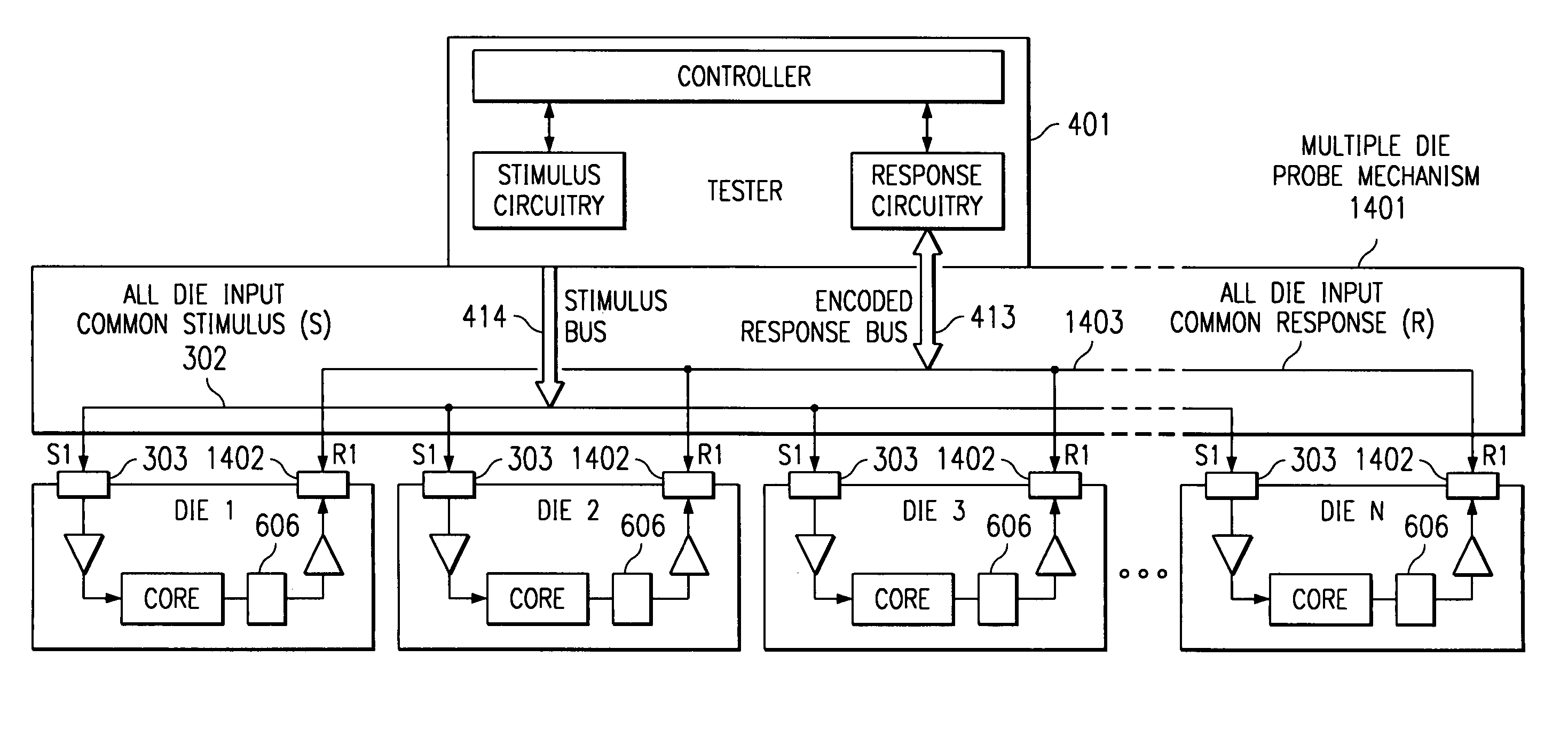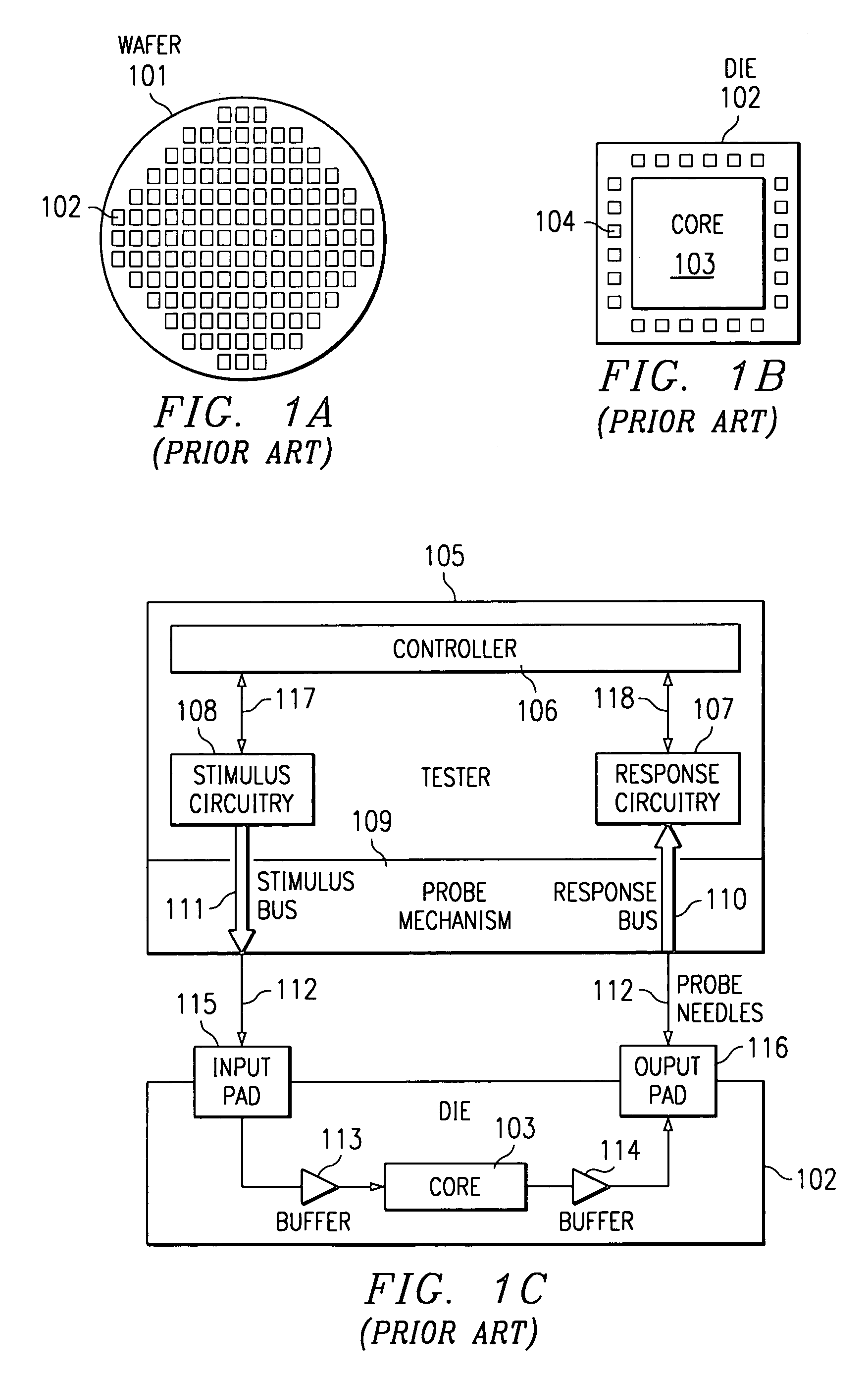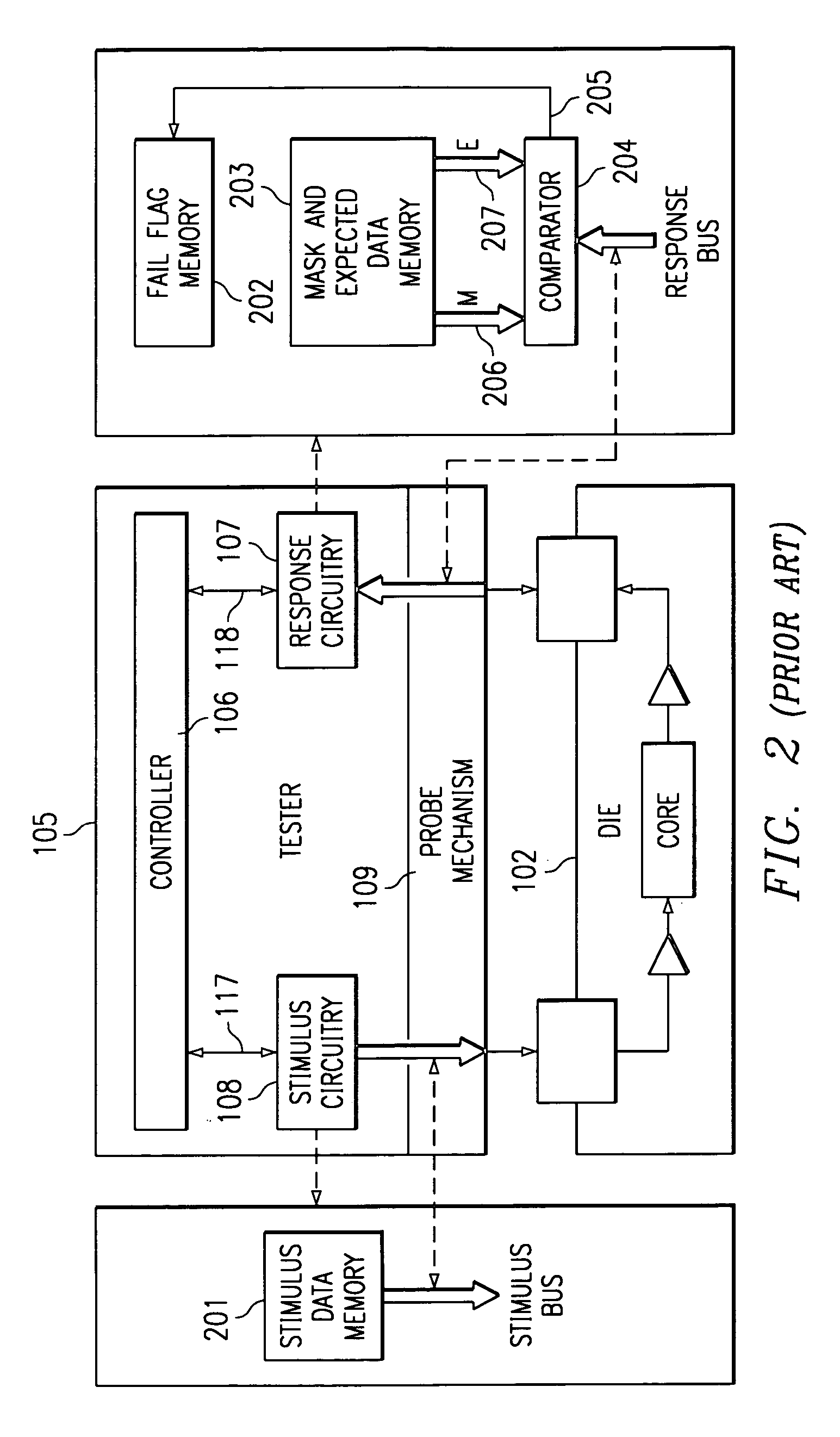Comparing on die response and expected response applied to outputs
a technology of expected response and die response, applied in the field of integrated circuit system and method testing, can solve the problems of limited number of dedicated dies, increased complexity of ics testing, and increased cost for ic manufacturers,
- Summary
- Abstract
- Description
- Claims
- Application Information
AI Technical Summary
Problems solved by technology
Method used
Image
Examples
Embodiment Construction
[0046]The present invention, as described in detail below, provides improvements that overcome the limitations stated above using conventional multiple die testing arrangements. Most notably, the present invention provides for significantly increasing the number of die that may be tested in parallel, without having to increase the width of the tester's response bus.
[0047]The present invention improves multiple die testing by; (1) adapting testers to communicate with multiple die using a novel response signaling technique, and (2) adapting the die to be receptive to the tester's novel response signaling technique. Also, the present invention improves connectivity to multiple die on wafer by processing stimulus and response interconnects on the wafer to improve access to multiple die during test. In addition to its ability to improve the testing of multiple die on wafer, the present invention may also be used advantageously to improve the testing of multiple packaged ICs.
[0048]FIG. 4 ...
PUM
 Login to View More
Login to View More Abstract
Description
Claims
Application Information
 Login to View More
Login to View More - R&D
- Intellectual Property
- Life Sciences
- Materials
- Tech Scout
- Unparalleled Data Quality
- Higher Quality Content
- 60% Fewer Hallucinations
Browse by: Latest US Patents, China's latest patents, Technical Efficacy Thesaurus, Application Domain, Technology Topic, Popular Technical Reports.
© 2025 PatSnap. All rights reserved.Legal|Privacy policy|Modern Slavery Act Transparency Statement|Sitemap|About US| Contact US: help@patsnap.com



